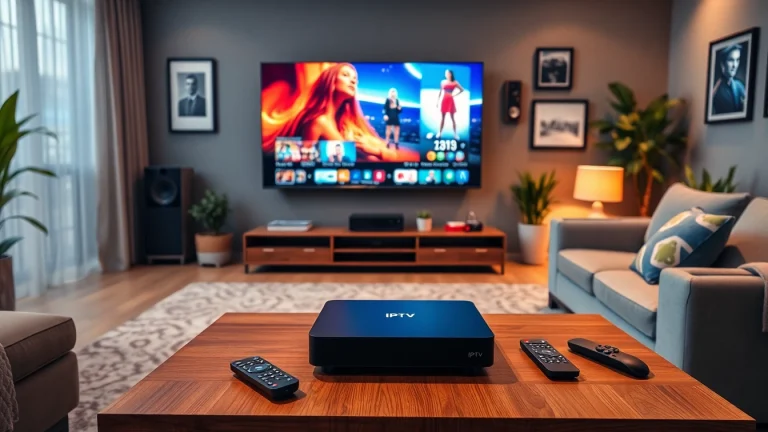
Maximizing Customer Engagement with Effective Loyalty Plans
Understanding Loyalty Plans and Their Importance
What Are Loyalty Plans?
Loyalty plans, often referred to as loyalty programs, are structured marketing strategies designed to enhance customer retention by rewarding loyal behavior and encouraging repeat business. These programs typically provide incentives such as points for purchases, discounts, or exclusive offers aimed at fostering long-term relationships with customers. By implementing loyalty plans, businesses can cultivate a community of returning customers while simultaneously increasing overall revenue.
Loyalty programs have evolved over the years from simple punch cards into complex digital offerings that use data analytics to personalize customer experiences. Businesses can leverage technology to track customer purchases, categorize engagement levels, and offer tailored rewards that resonate with their audience.
Key Benefits of Implementing Loyalty Plans
- Increased Customer Retention: Loyalty plans are proven to significantly enhance customer retention rates. By providing tangible rewards, businesses motivate customers to continue purchasing rather than seeking alternatives.
- Higher Average Order Values: Customers enrolled in loyalty programs are more likely to spend additional money. They often increase their order sizes to achieve reward thresholds or unlock exclusive offers.
- Valuable Customer Insights: Data collected through loyalty programs can inform marketing strategies. Businesses can analyze purchase patterns, preferences, and engagement metrics to make informed decisions.
- Differentiation: In a competitive marketplace, a well-structured loyalty program can set a business apart from its competitors, attracting new customers while retaining existing ones.
- Enhanced Customer Experience: Rewarding loyal customers can lead to improved satisfaction and brand loyalty. Customers appreciate recognition and incentives, which can foster a positive relationship with a brand.
Common Misconceptions about Loyalty Plans
Despite their advantages, several misconceptions regarding loyalty plans persist. These misunderstandings can limit their implementation and effectiveness:
- Only Large Brands Can Benefit: Smaller businesses can design effective loyalty programs that yield substantial results without the budget of a larger organization.
- Rewards Need to Be Expensive: While valuable rewards can enhance a loyalty program, even simple incentives can effectively motivate customer behavior and create loyalty.
- One-Size-Fits-All: Each customer is unique, and loyalty programs must be tailored to meet the specific needs and preferences of differing customer segments rather than relying on generic offerings.
- Loyalty Programs Are Just a Fad: Long- term data indicates that loyalty programs are here to stay. They continue evolving in response to customer demands and technological advancements.
Types of Loyalty Plans Businesses Can Implement
Points-Based Loyalty Plans
The most common type of loyalty plan is the points-based model. In this system, customers earn points for every purchase they make, which can later be redeemed for rewards or discounts. Key advantages of this system include its simplicity and clear reward structure:
- Flexibility in Redemption: Customers can save their points for a significant reward or redeem them for smaller incentives more frequently, enhancing satisfaction.
- Encouragement of Repeat Purchases: The accumulation of points motivates customers to return, leading to increased transaction frequency over time.
- Easy Integration with Technology: Points systems can be easily integrated into existing sales and CRM software, allowing for seamless tracking and management.
- Applicability Across Industries: Points-based loyalty programs can be utilized by various sectors, from retail to hospitality, allowing for wide-ranging implementation.
Tiered Loyalty Plans
Tiered loyalty plans encourage customers to increase their spending to achieve higher status levels, each with its perks and rewards. This stratification creates motivation for customers to engage more with a brand:
- Enhanced Customer Experience: Tiers can provide customers with exclusive access to events, products, or services, which elevates their experience and satisfaction.
- Personalized Communications: Brands can tailor their marketing messages based on tier status, ensuring relevance and enhancing the likelihood of engagement.
- Sense of Achievement: Customers enjoy the feeling of progress; tiered rewards offer recognition that drives loyalty and satisfaction.
- Encouragement of Increased Spending: The desire to reach higher tiers can result in raised average order values and overall customer lifetime value.
Paid Loyalty Programs
Paid loyalty programs require customers to pay a fee for membership, often providing immediate benefits in return. This model can be particularly effective for businesses aiming for high engagement:
- Higher Customer Commitment: Customers who invest financially in a loyalty program are likely to be more committed, ensuring they engage with the brand.
- Predictable Retail Revenue: Paid membership can create additional revenue streams, offering a cushion during slow periods.
- Exclusive Offers and Services: Members may receive perks like free shipping, exclusive discounts, or early access to sales, creating a distinct advantage for program members.
- Sustainability: A well-structured paid loyalty program can generate revenue while providing customers with real value, creating a long-lasting business model.
Designing an Effective Loyalty Plan
Identifying Your Target Audience
The first step in creating a successful loyalty plan is identifying the target audience. Businesses need to understand their customers’ demographics, purchasing behavior, and preferences:
- Demographic Analysis: Understand your customer base in terms of age, gender, income, and location to design a program that resonates with them.
- Segmentation: Divide customers into segments based on behavior patterns, frequency of purchases, or spending levels for personalized communication.
- Customer Surveys: Solicit feedback through surveys to gain insights into what types of rewards customers value the most.
- Behavior Tracking: Utilize analytics to track customer purchases and interactions, helping craft a program that aligns with their habits.
Setting Clear Goals and Rewards
Once the target audience is identified, businesses should set clear goals for the loyalty program and decide on engaging rewards:
- Define Objectives: Establish specific objectives for the loyalty program, such as increasing customer retention, boosting sales, or enhancing customer engagement.
- Variety of Rewards: Offer diverse rewards to appeal to different customer preferences, from discounts and exclusive products to experiential rewards.
- Communicate Value: Clearly convey the value of the loyalty program to customers, ensuring they understand the benefits of participating.
- Regular Evaluation: Frequently assess whether the program is meeting its goals and make adjustments as necessary based on performance metrics.
Leveraging Technology for Seamless Implementation
Technology plays a crucial role in the implementation and management of loyalty plans:
- Digital Platforms: Many businesses utilize software solutions to track customer engagement and simplify the process of points accumulation and redemption.
- Mobile Applications: Developing a mobile app can facilitate customer participation in the loyalty program and streamline communication.
- Data Analytics: Implementing analytics tools can provide insights into customer behaviors and program effectiveness, helping refine strategies.
- Integration with Existing Systems: Loyalty programs should be easily integrated with existing systems such as POS and CRM to ensure a seamless experience for both customers and staff.
Measuring the Success of Loyalty Plans
Key Metrics to Track
To assess the effectiveness of a loyalty plan, businesses should monitor various key performance indicators (KPIs):
- Customer Retention Rate: An essential metric that indicates the percentage of customers who return after their initial purchase.
- Average Order Value (AOV): It measures the average amount customers spend per transaction, providing insight into how loyalty affects spending.
- Customer Lifetime Value (CLV): This metric estimates the total revenue a customer is expected to generate throughout their relationship with the business.
- Redemption Rate: By measuring how often customers redeem rewards, businesses can gauge the attractiveness of their offerings.
Collecting Customer Feedback
Customer feedback is invaluable for continuous improvement of loyalty plans:
- Surveys and Polls: Regularly conduct surveys to collect opinions on the rewards system and overall program satisfaction.
- Focus Groups: Engage small customer groups to discuss their experiences and gather qualitative insights.
- Social Listening: Monitor social media channels for customer sentiments and feedback regarding the brand and its loyalty program.
- Incentivized Feedback: Consider offering rewards for customer feedback to encourage participation and gather actionable insights.
Adjusting Your Strategy Based on Data
Successful loyalty programs are adaptable and responsive to data:
- Regular Reviews: Periodically review performance data and customer feedback to inform future adjustments to the loyalty program.
- Testing Changes: Consider A/B testing to evaluate new incentives or structural changes before a full rollout.
- Staying Relevant: Ensure that the rewards offered remain attractive and relevant by adapting to changing customer preferences and industry trends.
- Continuous Improvement: Use acquired data not only to refine loyalty plans but to enhance overall customer strategies and business operations.
Case Studies: Successful Loyalty Plans in Action
Case Study 1: A Retail Brand’s Loyalty Plan
Consider the successful example of a retail brand XYZ, which implemented a tiered loyalty program. Customers were segmented into Bronze, Silver, and Gold tiers based on their spending over the year. Each level provided increasing benefits, including personalized discounts, exclusive access to new products, and invitations to member-only events.
Results included a 30% increase in customer retention within the first six months and a substantial rise in average order value. The brand also collected valuable customer insight data, allowing for further personalization of marketing efforts.
Case Study 2: A Restaurant’s Unique Loyalty Program
Another example comes from a local chain of restaurants that implemented a digital stamp card system. Customers would receive a digital stamp for every meal purchased. After ten stamps, they received a free meal. Additionally, customer preferences were tracked to send personalized offers to diners based on their favorite dishes.
This program resulted in a 25% increase in repeat visits and greater customer engagement as patrons were more excited about earning their free meal. The restaurant benefited from increased foot traffic and additional revenue from meals ordered while customers awaited their rewards.
Lessons Learned from Top Loyalty Plans
Top-performing loyalty plans share several common characteristics:
- Flexibility and Adaptability: Successful loyalty programs can adapt their offerings based on customer feedback and changing market trends.
- Customer-Centric Design: Programs must prioritize the needs and wants of customers to remain relevant and attractive.
- Data-Driven Decisions: Data analysis is crucial for understanding customer behavior and continuously improving loyalty programs.
- Strong Marketing Communication: Clear communication about program benefits is vital to maximize awareness and participation.


